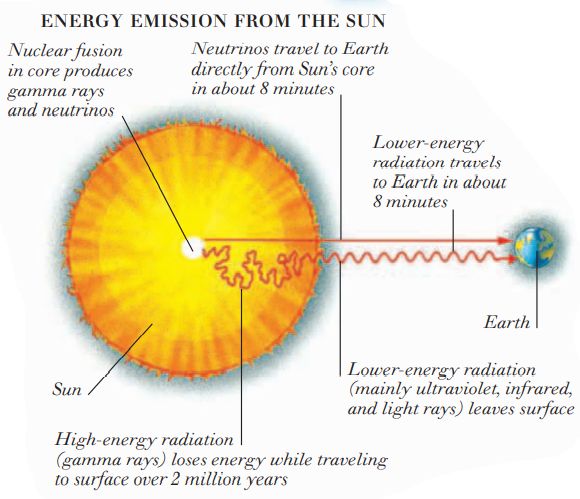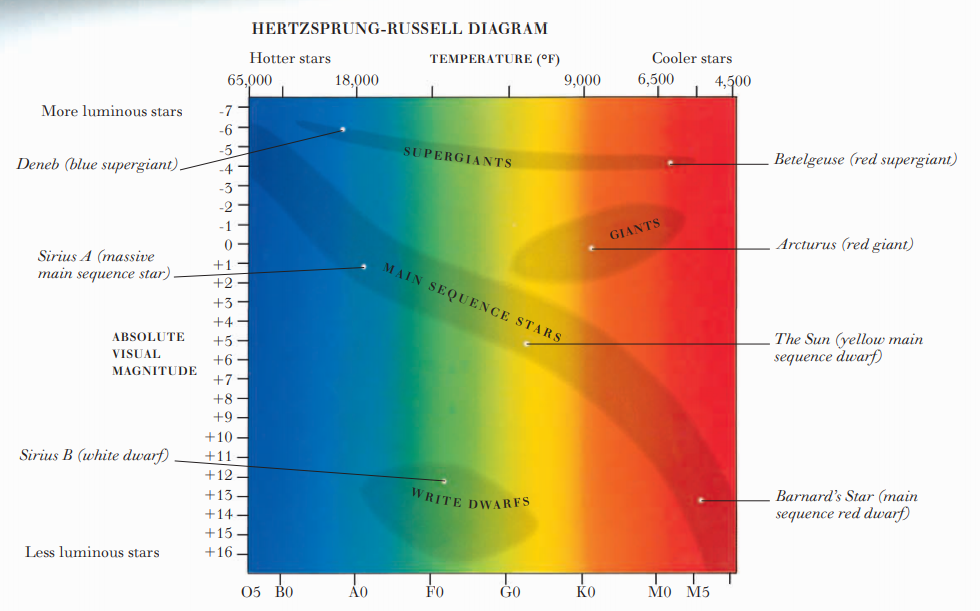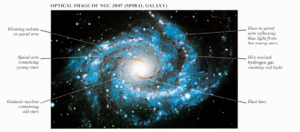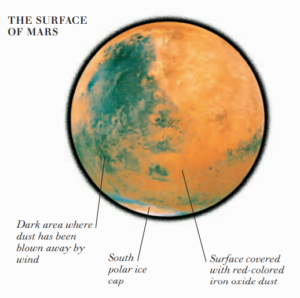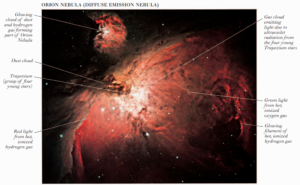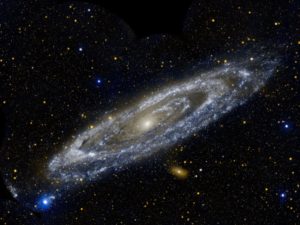STARS ARE BODIES of hot, glowing gas that is born in nebulae. They vary enormously in size, mass, and temperature: diameters range from about 450 times smaller to over 1,000 times bigger than that of the Sun; masses range from about a twentieth to over 50 solar masses, and surface temperatures range from about 5,500ºF (3,000ºC) to over 90,000ºF (50,000ºC).
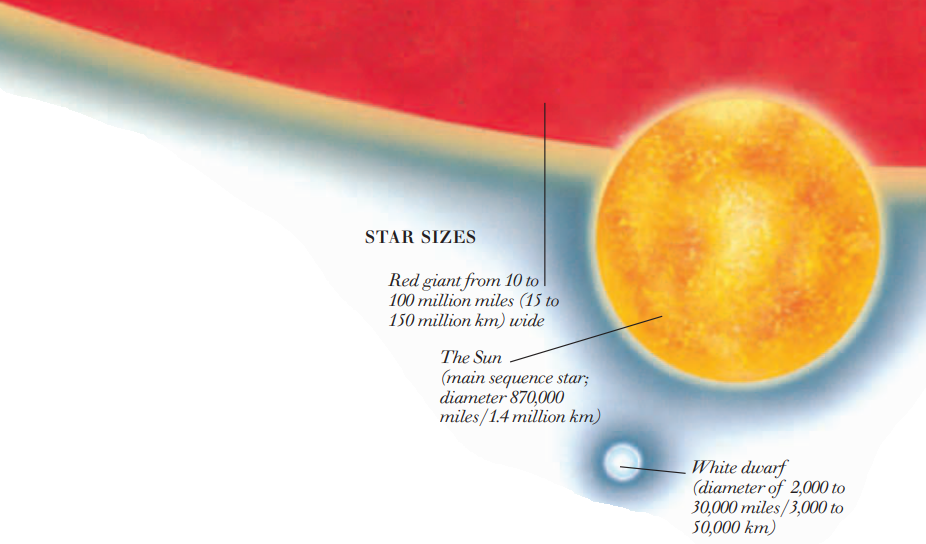
The color of a star is determined by its temperature: the hottest stars are blue and the coolest are red. The Sun, with a surface temperature of 10,000ºF (5,500ºC), is between these extremes and appears yellow. The energy emitted by a shining star is usually produced by nuclear fusion in the star’s core. The brightness of a star is measured in magnitudes—the brighter the star, the lower its magnitude. There are two types of magnitude: apparent magnitude, which is the brightness was seen from Earth, and absolute magnitude, which is the brightness that would be seen from a standard distance of 10 parsecs (32.6 light-years). The light emitted by a star may be split to form a spectrum containing a series of dark lines (absorption lines). The patterns of lines indicate the presence of particular chemical elements, enabling astronomers to deduce the composition of the star’s atmosphere. The magnitude and spectral type (color) of stars may be plotted on a graph called a Hertzsprung-Russell diagram, which shows that stars tend to fall into several well-defined groups. The principal groups are main sequence stars (those which are fusing hydrogen to form helium), giants, supergiants, and white dwarfs.
